You’ve probably heard whispers about yoni massage-maybe in a wellness podcast, a friend’s quiet recommendation, or a post that got quickly scrolled past. But what is it really? And why are more women today seeking it out-not for pleasure alone, but for healing, presence, and deep restoration?
Yoni massage isn’t about sex. It’s not a service you book for a quick thrill. It’s a sacred, intentional practice rooted in ancient Tantric traditions, designed to help women reconnect with their bodies after years of disconnection-whether from trauma, stress, medical procedures, or simply growing up in a world that taught them to shrink, hide, or silence their own needs.
What Is Yoni Massage, Really?
The word yoni comes from Sanskrit and means ‘sacred space’ or ‘source of life.’ In this context, it refers to the entire female genital region-not just the vagina, but the vulva, clitoris, inner thighs, and even the pelvic floor. A yoni massage is a gentle, non-sexual touch practice performed by a trained practitioner (or sometimes by oneself) to release emotional blockages, increase body awareness, and awaken natural sensation.
Unlike erotic or sexual touch, which often aims for orgasm or performance, yoni massage is about presence. It’s slow. It’s patient. It’s about listening-to your breath, your tension, your memories, your silence. Think of it like a deep tissue massage for your nervous system, but focused on the area most women are taught to avoid touching, let alone talking about.
Women who’ve experienced childbirth, sexual assault, chronic pain, or even just years of feeling disconnected from their bodies often describe yoni massage as the first time they felt truly seen in their own skin.
Why Women Are Turning to Yoni Massage Today
Modern life doesn’t leave much room for softness. Between work deadlines, parenting, social media pressure, and the constant buzz of notifications, many women feel like they’re running on empty-physically, emotionally, and energetically.
Yoni massage offers something rare: a space where you’re not expected to perform, please, or fix anything. You’re simply invited to feel.
Here’s what women report after just one session:
- Reduced pelvic pain and tension
- Improved sexual sensation and arousal
- Release of long-held emotional trauma
- Greater confidence in their body’s natural rhythms
- Deeper intimacy with partners-not because of sex, but because they finally feel whole inside
One client, Mara, 38, shared: “After my C-section, I avoided looking at my body for two years. I’d flinch when my husband touched me. The first yoni massage didn’t even involve penetration. Just warm oil on my inner thighs. I cried for 20 minutes. And then-I felt like I came home.”
This isn’t magic. It’s neuroscience. The genital area is packed with nerve endings connected directly to the limbic system-the part of the brain that stores emotion and memory. When you touch it with safety and care, you’re not just stimulating tissue. You’re rewiring old patterns of fear, shame, or numbness.
How a Yoni Massage Session Actually Works
If you’re imagining something wild or exotic, you’re not alone. But here’s what really happens in a professional, ethical session:
- Consultation first. The practitioner will talk with you-no pressure, no judgment. They’ll ask about your history, your goals, your boundaries. This part can take 30-45 minutes.
- Preparation. You’ll be alone to undress and get comfortable on a warmed table. The room is dim, quiet, with soft music or silence. No mirrors. No cameras. Just warmth.
- External touch only (at first). The massage begins with the outer thighs, lower belly, and pubic area. Warm oil is used-often infused with lavender, rose, or calendula. The practitioner moves slowly, checking in constantly: “Is this okay?” “Where do you feel the most tension?”
- Internal touch (if you choose). Only if you give clear, ongoing consent will internal touch be offered. This is never automatic. Many women never go beyond external touch-and that’s perfectly fine.
- Integration. After the massage, you’ll have time to rest, drink water, and talk if you want. No rush. No expectation to “feel better” right away.
Most sessions last 60 to 90 minutes. The goal isn’t to “fix” you-it’s to help you remember what your body already knows: that it’s safe to feel.
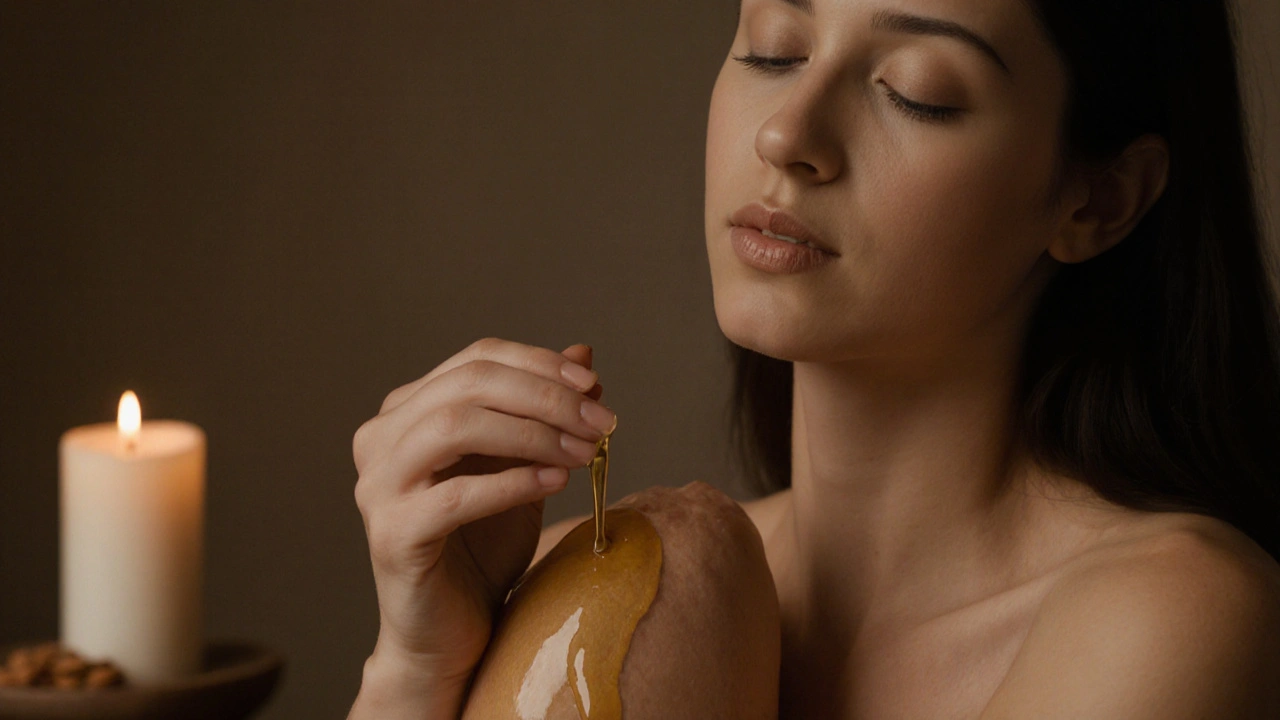
Yoni Massage vs. Other Sensual Practices
It’s easy to confuse yoni massage with erotic massage, nuru, or even tantric sex work. But the differences matter.
| Aspect | Yoni Massage | Erotic Massage |
|---|---|---|
| Primary Goal | Healing, embodiment, emotional release | Sexual arousal, pleasure, orgasm |
| Consent Process | Ongoing, verbal, detailed | Often assumed or implied |
| Practitioner Training | Therapeutic, trauma-informed, somatic education | Typically no formal training beyond aesthetics |
| Aftercare | Integrated rest, hydration, emotional support | Usually none |
| Legal Status | Legal in most places when practiced as therapy | Often illegal or gray-area service |
Yoni massage is practiced by certified bodyworkers, somatic therapists, and trauma-informed healers. It’s not a luxury service-it’s a form of somatic therapy. That’s why it’s growing in clinics, holistic wellness centers, and even some integrative medical practices.
Who Should Try It-and Who Should Wait
Yoni massage isn’t for everyone-and that’s okay.
Good candidates:
- Women recovering from childbirth, surgery, or pelvic trauma
- Those with chronic pelvic pain, vaginismus, or low libido
- People healing from sexual abuse or emotional neglect
- Anyone who feels disconnected from their body or ashamed of their sexuality
Wait if you:
- Are currently in acute emotional crisis (e.g., recent loss, active PTSD episode)
- Have an active STI or infection
- Feel pressured by a partner to try it
- Expect it to be “erotic” or “spicy”
It’s not a quick fix. It’s a process. Some women need 3-5 sessions before they feel the shift. Others feel it in the first 10 minutes.
How to Find a Qualified Practitioner
Not everyone calling themselves a “yoni masseuse” is trained. Here’s how to find someone safe:
- Look for certifications: Somatic Experiencing, Tantric Therapy, or Female Embodiment Coaching are good signs.
- Ask about their training: A real practitioner will happily share their background. If they’re vague, walk away.
- Check reviews: Look for mentions of safety, boundaries, and emotional support-not just “amazing orgasm.”
- Trust your gut: If a website feels too sexualized, too flashy, or pushes “packages,” it’s probably not ethical.
In cities like Berlin, Amsterdam, Portland, or Toronto, you’ll find clinics that offer yoni massage as part of women’s health programs. In the U.S., organizations like the International Association of Sexual Health Professionals maintain directories of certified practitioners.

What to Expect After Your First Session
You might feel tired. Or emotional. Or strangely calm. Some women sleep for 12 hours. Others feel hyper-aware of their body for days. That’s normal.
Your nervous system has been in survival mode for a long time. This massage isn’t just touching skin-it’s telling your brain: “You’re safe now.”
It’s common to have dreams, memories, or sudden insights in the days after. Keep a journal. Drink water. Don’t rush back into your routine. Let the shift settle.
And if you don’t feel anything? That’s okay too. Sometimes the deepest healing happens quietly, beneath the surface.
Can You Do It Yourself?
Yes. Many women begin with self-yoni massage before working with a practitioner. It’s a powerful way to reclaim autonomy.
Here’s a simple start:
- Set the mood: Light a candle, play soft music, turn off your phone.
- Use a natural oil: Coconut, almond, or jojoba oil warmed between your hands.
- Start with your inner thighs. Massage slowly. Breathe.
- Move to your pubic bone. Use circular motions. No pressure.
- When you’re ready, gently touch your clitoris-not to stimulate, but to observe. How does it feel? Warm? Cold? Numb? Tingly?
- Stay with it. Don’t try to make it “feel good.” Just notice.
There’s no right way. No goal. Just presence.
Frequently Asked Questions
Is yoni massage the same as tantric massage?
Tantric massage is broader-it can include the whole body and focus on energy flow. Yoni massage is a specific type of tantric practice focused on the female genital area. Not all tantric massages include yoni work, but most yoni massages are rooted in tantric principles.
Is yoni massage legal?
Yes, when performed by a licensed bodyworker or therapist in a clinical or wellness setting. It’s considered a form of somatic therapy, not prostitution. Always verify the practitioner’s credentials and ensure the setting is professional and private.
Can I do yoni massage if I’m not sexually active?
Absolutely. Yoni massage has nothing to do with sexual activity. Many women who’ve never had sex, or who no longer have a partner, find it deeply healing. It’s about reconnecting with your body, not about sex.
How much does a yoni massage cost?
Prices vary by location and practitioner experience. In most cities, expect to pay between $120 and $250 for a 75-minute session. Some wellness centers offer sliding scales or package deals. Avoid anything under $80-it often signals lack of training or ethical standards.
Will I feel embarrassed during the session?
It’s normal to feel nervous at first. But a good practitioner will create a space where shame has no place. You’ll be covered at all times except during the specific area being worked on, and you’ll be in control of every step. Many women say the embarrassment fades within minutes as they realize they’re not being judged.
If you’ve been carrying tension in your pelvis-whether from stress, pain, or silence-it’s time to let it go. Yoni massage isn’t about fixing what’s broken. It’s about remembering what was always there: your body, your power, your sacred space.

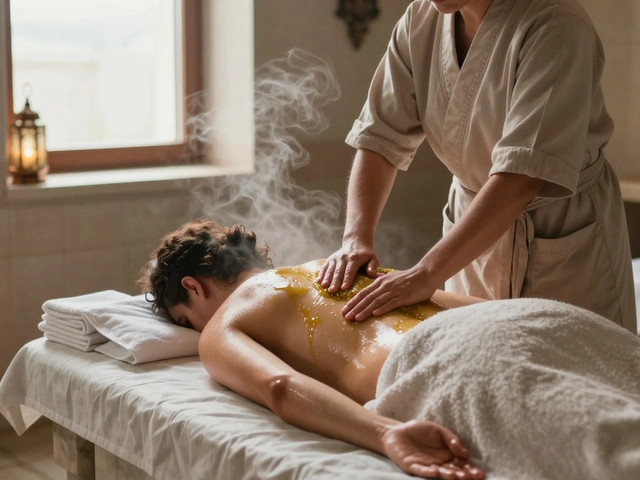
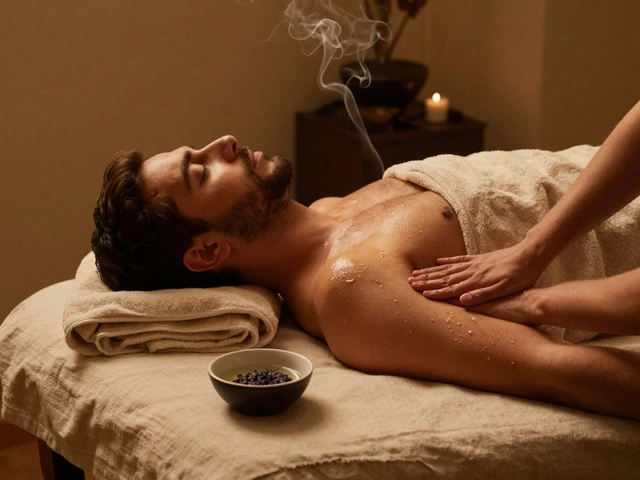
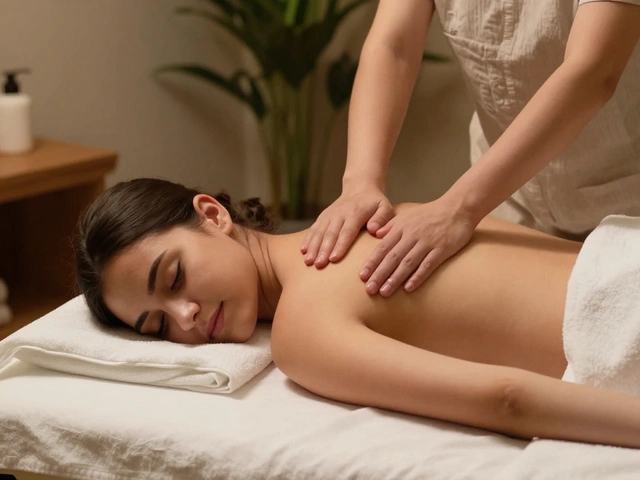
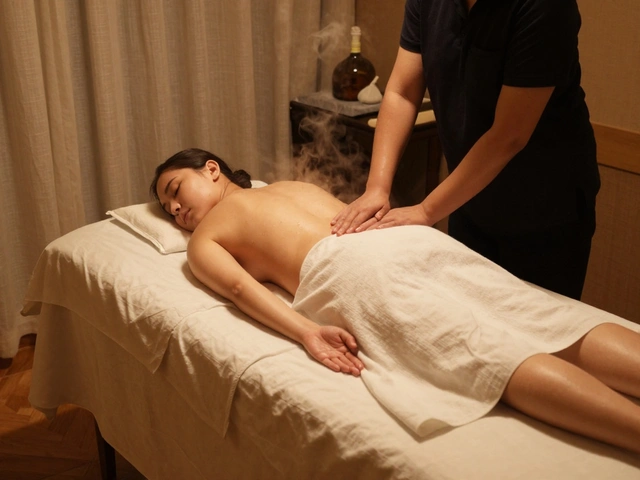

This is actually kind of beautiful. Not sure why it’s so taboo. We massage our feet, our backs, why not this?
So you’re telling me paying someone to touch your pussy is therapy now? Next they’ll say licking your balls is for PTSD. This is just sex with a fancy name. Everyone knows it’s a front for prostitution.
Why not just get a handjob and call it a day?
I’m not against healing, but this crosses a line. There are no standardized regulations, no licensing bodies overseeing these practitioners, and yet women are being told this is ‘somatic therapy’? That’s dangerous.
What’s stopping someone with a criminal record from calling themselves a ‘Tantric therapist’? No background checks, no oversight. It’s a legal gray zone wrapped in spiritual jargon.
And don’t get me started on the ‘self-massage’ advice. You’re telling women to rub their genitals with coconut oil while listening to ‘soft music’? That’s not healing-it’s a one-way ticket to obsession or delusion.
Real therapy involves licensed professionals with degrees, not candlelit rooms and vague promises of ‘reconnection.’
This isn’t wellness. It’s vulnerability exploitation dressed up as enlightenment.
Interesting how the article frames this as neuroscience-backed healing but never cites a single study
Is there actual peer-reviewed research on yoni massage’s effect on limbic system rewiring or is this just plausible-sounding pseudoscience
Also curious why the cost range is $120–250 if it’s not a medical service
Why does something that’s not sex cost more than a massage therapist who works on your back for an hour
Yoni massage? More like yoni hustle. You people really believe this is therapy? You’re not healing trauma-you’re paying for a stranger to touch your genitals under the guise of spirituality.
And that ‘self-massage’ section? That’s just masturbation with a thesaurus. ‘Observe your clitoris’-what is this, a TED Talk for horny introverts?
There’s a reason this isn’t covered by insurance. Because it’s not medicine. It’s fetish tourism with a side of emotional manipulation.
And don’t even get me started on the ‘ethical practitioner’ checklist. If you have to ask if they’re legit, you’re already in the wrong room.
Wake up. This isn’t healing. It’s exploitation with incense.
Let’s be honest. This is just another way for people to monetize female vulnerability. Women are told they’re broken, then sold expensive ‘solutions’ that sound profound but have zero scientific backing.
There’s a reason you don’t see this in mainstream medical journals. Because it’s not medicine. It’s spiritual capitalism.
And the fact that they’re encouraging self-massage? That’s just a way to make women feel guilty if they don’t do it. ‘If you’re not touching yourself, you’re not healing.’
Stop selling trauma as a product. Real healing doesn’t come with a price tag or a massage oil recommendation.
Look, I get the intention. But this feels like a very Western reinterpretation of Tantra-stripped of its philosophical depth and turned into a luxury spa experience.
Traditional Tantric practices involve years of discipline, meditation, and spiritual study-not a 75-minute oil rub with a checklist.
And the comparison table? ‘Yoni massage: healing’ vs ‘erotic massage: arousal’? That’s a false dichotomy. Most erotic services also emphasize consent and aftercare now.
This isn’t revolutionary. It’s repackaged. And the pricing? $250 for a pelvic massage? That’s not therapy. That’s a performance of exclusivity.
So let me get this straight. You pay $200 to have someone whisper ‘is this okay?’ while touching your vagina… and that’s healing?
My grandma healed with tea and tough love. Guess I missed the memo that trauma requires warm oil and silence.
Next thing you know, people will be paying to have their kneecaps hugged for ‘emotional release.’
Okay hear me out-this is actually one of the most important things I’ve read this year.
I had a traumatic birth. After that, I couldn’t even wear leggings without feeling like my body was a crime scene.
I tried therapy. I tried yoga. I tried EMDR. Nothing worked until I found a certified somatic practitioner who did yoni massage.
It wasn’t sexy. It wasn’t even comfortable at first. But for the first time since my daughter was born, I felt like my body wasn’t a betrayal.
That first session? I cried so hard I couldn’t breathe. But I also laughed. And then I slept for 14 hours.
It didn’t fix me. But it gave me back the right to feel safe in my own skin.
And yeah-I did the self-massage thing after. With coconut oil. And a candle. And I didn’t try to make it ‘do’ anything.
Just… felt.
That’s all it was.
And it changed everything.